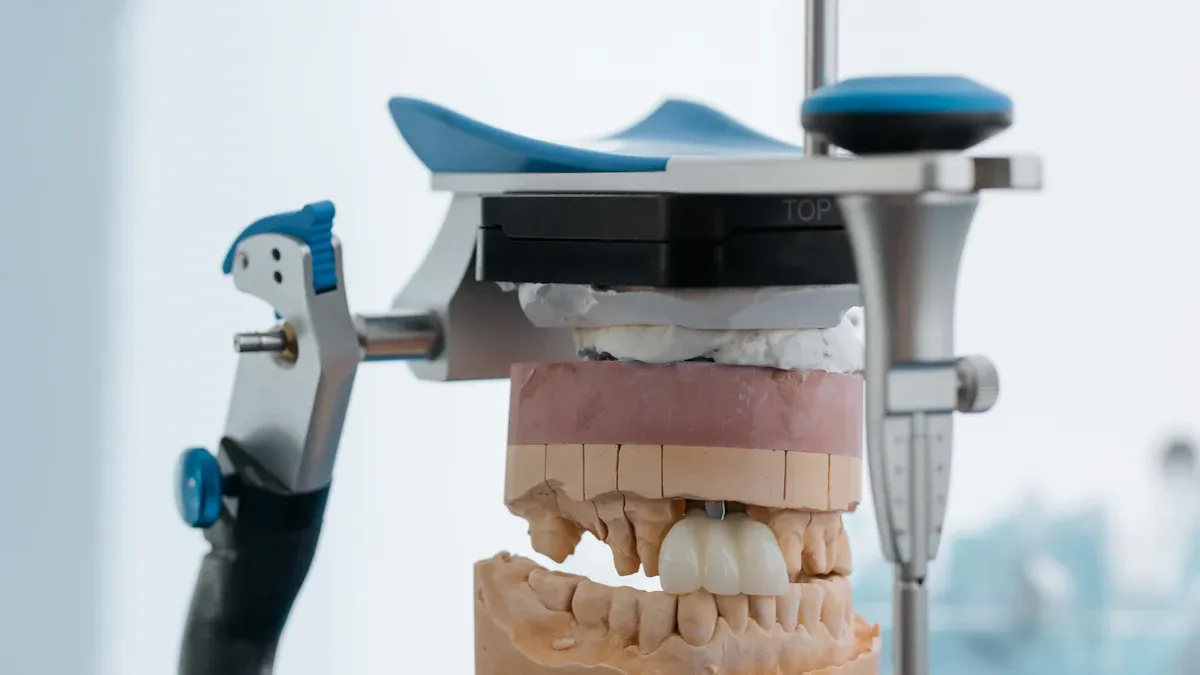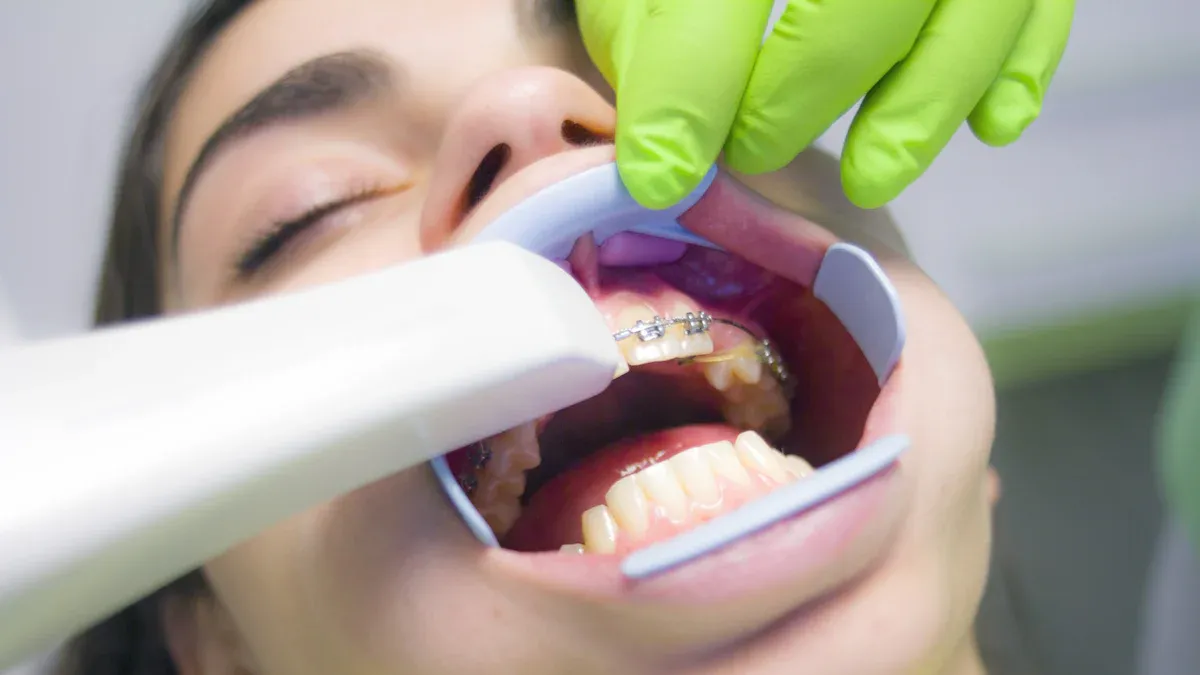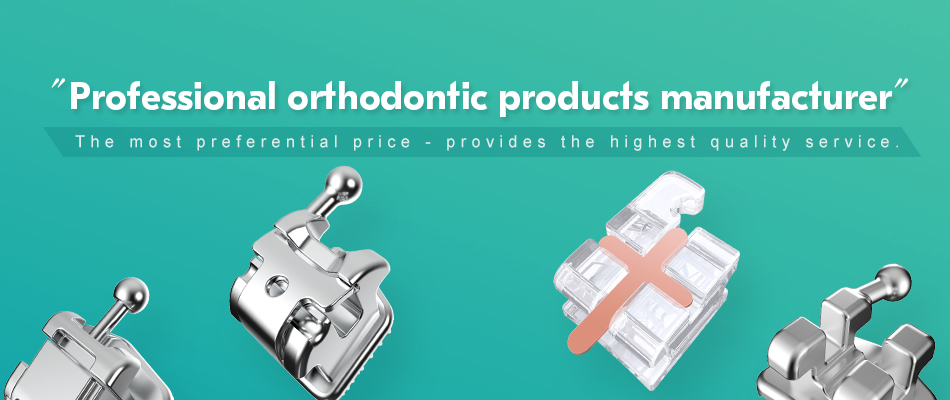
Scaling orthodontic supply chains plays a pivotal role in supporting the growth of large dental networks. The global orthodontic consumables market, valued at USD 3.0 billion in 2024, is projected to grow at a CAGR of 5.5% from 2025 to 2030. Similarly, the U.S. Dental Service Organization market, worth USD 24.6 billion in 2023, is expected to expand at a CAGR of 16.7% between 2024 and 2032. These figures highlight the immense demand for efficient dental chain suppliers to meet the needs of an evolving industry.
Meeting the demands of over 500 dental chains presents both challenges and opportunities. Increasing patient demand, driven by an aging population, underscores the need for scalable solutions. However, dental practices must also navigate compliance requirements and rising cybersecurity threats, as evidenced by a 196% increase in healthcare data breaches since 2018. Addressing these complexities requires innovative strategies and robust supply chain management.
Key Takeaways
- Growing orthodontic supply chains is key for helping 500+ dental chains. Good supply chains make products and services easier to get.
- Using new tools like live tracking and smart predictions helps manage inventory better. This lowers costs and makes work smoother.
- Working closely with suppliers ensures steady access to good products. Teamwork brings new ideas and keeps costs under control.
- Using Just-In-Time (JIT) systems cuts down on waste and storage. This method makes sure products arrive on time without extra stock.
- Training workers on new tools and rules is very important. A trained team works better and improves the supplier’s image.
The Orthodontic Supply Chain Landscape

Market trends in orthodontic supplies
The orthodontic supplies market is evolving rapidly due to several key trends.
- The increasing prevalence of oral diseases, affecting an estimated 3.5 billion people globally as of 2022, is driving demand for orthodontic products.
- A growing focus on aesthetics among adults and adolescents has led to a surge in demand for discreet treatment options like clear aligners and ceramic braces.
- Technological advancements, such as 3D printing and digital scanning, are reshaping the industry by enhancing treatment customization and efficiency.
- Expanded insurance coverage for orthodontic treatments is making these services more accessible, creating opportunities for market growth.
These trends highlight the importance of innovation and adaptability in meeting the needs of modern dental practices.
Growth drivers in dental chain suppliers
Dental chain suppliers play a critical role in supporting the growth of large-scale dental networks. Several factors contribute to this growth:
| Growth Driver | Evidence |
|---|---|
| Increase in prevalence of mouth, throat, and tongue cancer | This factor is identified as a major driver for the dental chains market. |
| Forecasted market growth | The dental chains market in the US is expected to grow by USD 80.4 billion from 2023-2028, with a CAGR of 8.1%. |
| Adoption of advanced dental procedures | Increasing adoption of advanced dental procedures is a prime reason for market growth. |
These drivers emphasize the need for dental chain suppliers to adopt innovative solutions and maintain high-quality standards to meet the growing demand.
Global supply chain dynamics in orthodontics
The global orthodontic supply chain operates within a complex and interconnected framework. Manufacturers, distributors, and dental chain suppliers must navigate logistical challenges, regulatory requirements, and fluctuating market demands. Emerging markets in Asia-Pacific and Latin America are becoming significant contributors to the global orthodontic landscape, driven by rising healthcare investments and increasing awareness of oral health. Additionally, advancements in supply chain technologies, such as real-time tracking and predictive analytics, are enabling more efficient operations and better inventory management. These dynamics underscore the importance of agility and collaboration in scaling orthodontic supply chains effectively.
Challenges in Scaling Orthodontic Supply Chains
Supply chain inefficiencies
Scaling orthodontic supply chains often exposes inefficiencies that hinder operational performance. As the number of dental practices grows, inventory management becomes increasingly complex. Many suppliers struggle to maintain optimal stock levels, leading to either overstocking or stockouts. Rising costs further exacerbate these inefficiencies, particularly when expanding operations to serve larger networks. Additionally, logistical challenges, such as delays in transportation or miscommunication between stakeholders, disrupt the smooth flow of supplies. Addressing these inefficiencies requires robust planning and advanced inventory control systems to streamline operations.
Cost management and quality assurance
Balancing cost management with quality assurance is a critical challenge for dental chain suppliers. Effective procurement strategies focus on sourcing high-quality products at competitive prices, ensuring reliability without compromising affordability. Maintaining optimal inventory levels is equally important. Techniques like just-in-time (JIT) inventory systems help minimize costs while preventing shortages. Supplier relationship management (SRM) also plays a vital role in achieving long-term success. By fostering strategic partnerships, suppliers can secure consistent access to premium materials. Furthermore, integrating technological advancements, such as 3D printing and digital dentistry, into supply chains requires careful planning to avoid unnecessary expenses while enhancing product quality.
Regulatory compliance hurdles
Regulatory compliance presents significant challenges for orthodontic supply chains. Manufacturers must adhere to stringent standards, such as ISO 10993, which evaluates the biological safety of medical devices. This includes testing for cytotoxicity and sensitization risks, particularly for products like orthodontic rubber bands that come into contact with mucosal tissues. Non-compliance can lead to severe consequences, including product recalls or market bans. Compliance measures often demand substantial investments in testing, certifications, and audits, which can be time-consuming and costly. For smaller companies, these requirements pose additional barriers to scaling operations effectively.
Logistical complexities in large-scale operations
Scaling orthodontic supply chains to serve over 500 dental chains introduces significant logistical challenges. Managing the movement of orthodontic products across multiple locations requires precision, coordination, and adaptability. Without a robust logistics strategy, inefficiencies can disrupt operations and impact customer satisfaction.
One of the primary challenges involves inventory distribution across geographically dispersed networks. Dental chains often operate in multiple regions, each with unique demand patterns. Ensuring the right products reach the right locations at the right time requires advanced demand forecasting and inventory planning systems. Failure to align supply with demand can lead to stockouts or overstocking, both of which increase operational costs.
Note: Real-time tracking systems and predictive analytics can help suppliers monitor inventory levels and anticipate demand fluctuations.
Another critical issue is transportation management. Orthodontic products, such as brackets and aligners, are often delicate and require careful handling during transit. Suppliers must ensure that transportation methods meet quality standards to prevent damage. Additionally, rising fuel costs and global shipping delays further complicate logistics, making cost-effective transportation solutions essential.
Customs regulations and cross-border shipping also pose challenges for suppliers operating internationally. Navigating import/export requirements, tariffs, and documentation can delay shipments and increase costs. Suppliers must establish strong relationships with logistics providers and customs brokers to streamline these processes.
Finally, last-mile delivery remains a persistent challenge. Delivering products to individual dental practices within tight timeframes requires efficient route planning and reliable delivery partners. Any delays in this final stage can disrupt dental operations and erode trust in the supplier.
Addressing these logistical complexities demands a combination of technology, strategic partnerships, and meticulous planning. Suppliers who invest in these areas can enhance operational efficiency and better serve the growing demands of large-scale dental networks.
Strategies for Scaling Orthodontic Supply Chains
Optimizing processes for efficiency
Efficient processes form the backbone of scalable orthodontic supply chains. Streamlining operations ensures that dental chain suppliers can meet growing demands without compromising quality or cost-effectiveness. Several strategies can enhance process efficiency:
- Demand Planning: Accurate forecasting ensures the availability of the right products at the right time, reducing the risk of shortages or overstocking.
- Adopting Just-In-Time (JIT) Inventory Systems: This approach minimizes storage needs by ordering supplies only when required, significantly cutting waste and costs.
- Leveraging Technology for Inventory Tracking: Advanced software and RFID technology enable real-time inventory monitoring, improving accuracy and operational efficiency.
- Supplier Relationship Management: Strong partnerships with suppliers lead to better pricing and delivery terms, optimizing overall costs.
- Streamlined Ordering Processes: Online systems reduce administrative tasks and accelerate the replenishment of essential items.
By implementing these measures, suppliers can create a more agile and responsive supply chain capable of scaling effectively.
Technology adoption in supply chain management
Technology plays a transformative role in modernizing orthodontic supply chains. Digital tools and innovations enhance precision, efficiency, and overall performance. Key advancements include:
- Digital Orthodontics: Technologies like 3D imaging and AI improve treatment customization and workflow efficiency.
- Digital Scanners: These eliminate the need for traditional impressions, enhancing patient comfort and reducing processing times.
- Predictive Analytics: Advanced analytics tools forecast demand trends, enabling better inventory planning and reducing waste.
- Real-Time Tracking Systems: These systems provide visibility into inventory levels and shipment statuses, ensuring timely deliveries.
Adopting these technologies empowers dental chain suppliers to optimize their operations and deliver superior service to their clients.
Workforce training for operational excellence
A well-trained workforce is essential for scaling orthodontic supply chains. Employees equipped with the right skills and knowledge can drive efficiency and innovation. Training programs should focus on:
- Technology Proficiency: Staff must understand how to use advanced tools like inventory management software and digital scanners.
- Regulatory Compliance: Training on industry standards ensures adherence to safety and quality requirements.
- Customer Service Skills: Employees should be adept at addressing client needs and resolving issues promptly.
Regular workshops and certifications can keep the workforce updated on the latest industry trends and technologies. A skilled team not only enhances operational performance but also strengthens the reputation of dental chain suppliers.
Strengthening supplier partnerships
Strong supplier partnerships form the foundation of scalable orthodontic supply chains. These relationships ensure consistent access to high-quality products, streamline operations, and foster mutual growth. For dental chain suppliers, cultivating robust partnerships with manufacturers and distributors is essential to meet the demands of large-scale operations.
Suppliers who prioritize collaboration with Original Equipment Manufacturers (OEMs) gain significant advantages. OEM services allow clinics to design orthodontic brackets tailored to their specific needs, enhancing patient outcomes. This customization not only improves treatment precision but also strengthens the supplier’s reputation for innovation. Additionally, partnering with OEMs reduces overhead costs associated with in-house manufacturing, enabling clinics to achieve greater cost efficiency.
Key metrics validate the impact of strong supplier partnerships in orthodontic supply chains. Customer feedback highlights a supplier’s reliability and ability to meet expectations consistently. Industry recognition, such as awards and certifications, reflects a manufacturer’s commitment to excellence. Financial stability further ensures that suppliers can maintain operations without disruptions, minimizing risks for dental chains.
Building trust and transparency is critical in supplier relationships. Open communication fosters a shared understanding of goals and expectations, reducing the likelihood of conflicts. Regular performance evaluations and feedback loops help identify areas for improvement, ensuring continuous growth. Suppliers who invest in long-term partnerships benefit from better pricing, priority access to products, and enhanced operational efficiency.
In an increasingly competitive market, dental chain suppliers must leverage strong partnerships to remain agile and responsive. By aligning with reliable manufacturers and distributors, they can scale their operations effectively while maintaining high standards of quality and service.
Real-World Examples of Successful Scaling

Case study: Scaling dental chain suppliers
Scaling dental chain suppliers requires strategic approaches to optimize operations and meet growing demands. Several successful practices highlight the effectiveness of scaling efforts:
- Just-in-Time (JIT) Inventory Management: Suppliers implementing JIT principles maintain optimal stock levels without excess inventory. This reduces capital tied up in storage and ensures timely availability of orthodontic products.
- Supplier Relationships: Building strong partnerships with manufacturers enables bulk discounts and better price monitoring. These relationships enhance supply chain efficiency and reduce procurement costs.
- Technology Innovations: The adoption of tools like teledentistry and AI improves operational efficiency and patient satisfaction. These technologies streamline workflows and enhance the precision of orthodontic treatments.
- Supply Chain Management Systems: Robust systems allow suppliers to track inventory levels and set reorder points. This minimizes costs and ensures uninterrupted supply to dental chains.
These strategies demonstrate how dental chain suppliers can scale their operations effectively while maintaining high standards of service and quality.
Lessons from healthcare and retail industries
Healthcare and retail industries offer valuable insights into scaling supply chains. Their innovative approaches provide lessons that can be applied to orthodontic suppliers:
- Data-Driven Decision Making: Companies like Netflix and Uber leverage big data analytics to optimize operations. Netflix analyzes millions of user interactions to produce successful series, while Uber uses customer demand data to implement surge pricing. These practices highlight the importance of data in enhancing supply chain performance.
- Hyper-Targeted Marketing: Coca-Cola’s use of big data for targeted advertisements resulted in a fourfold increase in clickthrough rates. Orthodontic suppliers can adopt similar strategies to reach dental chains more effectively.
- Operational Efficiency: Retailers using data-driven tools report an average profitability boost of 8%. This underscores the value of integrating analytics into supply chain management.
By applying these lessons, dental chain suppliers can improve scalability and gain a competitive edge in the market.
Denrotary Medical’s approach to scalability
Denrotary Medical exemplifies scalability in orthodontic supply chains through its advanced production capabilities and commitment to quality. The company operates three automatic orthodontic bracket production lines, achieving a weekly output of 10,000 units. Its modern workshop and production line comply with stringent medical regulations, ensuring product reliability and safety.
Denrotary’s investment in cutting-edge technology further enhances scalability. The company utilizes professional orthodontic production equipment and testing instruments imported from Germany. This ensures precision in manufacturing and adherence to global standards. Additionally, Denrotary’s dedicated research and development team focuses on creating innovative solutions to meet the evolving needs of dental chain suppliers.
By prioritizing quality, efficiency, and technological advancement, Denrotary Medical has positioned itself as a leader in orthodontic supply chain scalability. Its approach serves as a model for other suppliers aiming to expand their operations and deliver exceptional service to dental chains worldwide.
Scaling orthodontic supply chains is essential for meeting the growing demand of dental chains worldwide. With 3.5 billion people affected by oral diseases and 93% of adolescents experiencing malocclusions, the need for efficient supply chains has never been greater. Technological advancements, such as CAD/CAM technology and AI, are revolutionizing treatment efficiency, while increasing awareness of dental health drives demand for orthodontic solutions.
| Evidence Type | Details |
|---|---|
| Increased Prevalence of Conditions | 3.5 billion people affected by oral diseases globally; 35% of children and 93% of adolescents have malocclusions. |
| Technological Advancements | Innovations like CAD/CAM technology and AI in orthodontics are enhancing treatment efficiency. |
| Awareness of Procedures | 85% of Americans are concerned about dental health, leading to increased demand for orthodontic treatments. |
By adopting strategies like process optimization, technology integration, and supplier collaboration, dental chain suppliers can overcome challenges and scale effectively. Future opportunities lie in leveraging AI, predictive analytics, and global partnerships to drive innovation and growth in orthodontic supply chain management.
FAQ
What are the key benefits of scaling orthodontic supply chains?
Scaling orthodontic supply chains improves efficiency, reduces costs, and ensures consistent product availability. It enables suppliers to meet the growing demands of dental chains while maintaining high-quality standards. Additionally, it fosters innovation through advanced technologies and strengthens partnerships with manufacturers and distributors.
How does technology enhance orthodontic supply chain management?
Technology streamlines operations by enabling real-time inventory tracking, predictive analytics, and automated production processes. Tools like digital scanners and AI improve precision and reduce lead times. These advancements help suppliers optimize workflows, minimize waste, and deliver superior service to dental chains.
What role do supplier partnerships play in scalability?
Strong supplier partnerships ensure consistent access to high-quality materials and products. Collaboration with manufacturers allows for cost-effective solutions and customized orthodontic products. These partnerships also enhance operational efficiency, reduce risks, and support long-term growth for dental chain suppliers.
How can orthodontic suppliers address regulatory compliance challenges?
Suppliers can address compliance challenges by investing in rigorous testing, certifications, and audits. Adhering to international standards, such as ISO 10993, ensures product safety and quality. A dedicated compliance team can monitor regulatory updates and implement necessary changes to maintain adherence.
Why is workforce training essential for scaling supply chains?
A well-trained workforce drives operational excellence by efficiently managing advanced tools and adhering to industry standards. Training programs enhance employees’ technical skills, regulatory knowledge, and customer service abilities. This ensures smooth operations, improved productivity, and a stronger reputation for orthodontic suppliers.
Post time: Apr-12-2025


